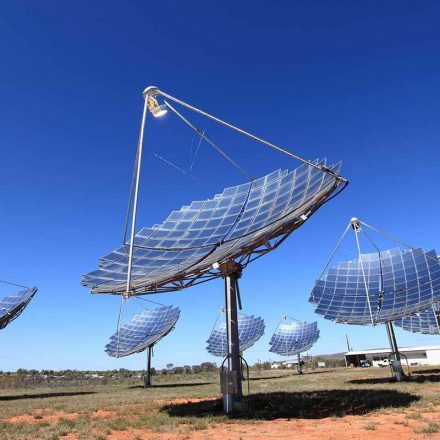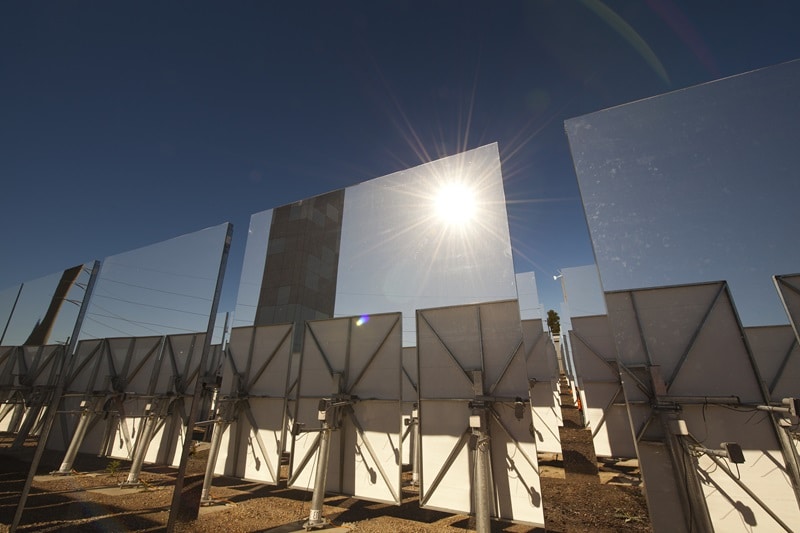The US Department of Energy will fund the $33 million (US$25 million) concentrated solar thermal technology trial, which includes the construction of a 1 MW demonstration plant with a minimum of six hours of storage in New Mexico.
The technology is a result of a partnership between US-based Sandia National Laboratories and the Australian Solar Thermal Research Initiative (ASTRI), an $100 million consortium established through the Australian Renewable Energy Agency (ARENA) and CSIRO.
Concentrated solar thermal technology stores energy by using concentrated sunlight to heat a “curtain” of falling low-cost particles to 700°C. The heated particles can then be stored and reheated later to power a turbine at any time, making the technology’s power output adjustable to grid demand.

Clean Energy Council
Preceding the funding decision, the Australian National University (ANU) modelled the technology and found it to be “cost-effective and reliable.”
“Our modelling shows a concentrated solar power system built around this falling particle curtain could generate a megawatt-hour of stored electricity for less than US$60,” Associate Professor John Pye said.
“A least-cost system built at the 100 megawatt scale would come with enough storage to run the turbine for 14 hours, easily enough to allow continuous night-time electricity for large parts of the year.”
Australia will continue to collaborate with the US on developing the new technology, including trials at the CSIRO solar thermal falling particle test facility, set to commence in the coming weeks.
“This form of energy is not only inexpensive and clean; with its built-in low-cost storage, it can contribute greatly to the reliability of the renewable energy mix, and to facilitating the global transition from fossil fuels to 100% renewable energy as mandated by the Paris Agreement,” Pye added.
The ANU Associate Professor also noted the heat-storing ceramic particles in this system were, in fact, originally developed for use in unconventional natural gas fracking – a far cry from the clean technology they now feature in.
“Zero emissions, dispatchable energy sources like concentrated solar thermal storage will be needed to back up increasing shares of renewable energy,” Federal Minister for Energy and Emissions Reduction, Angus Taylor, said in a statement today.
This content is protected by copyright and may not be reused. If you want to cooperate with us and would like to reuse some of our content, please contact: editors@pv-magazine.com.









3 comments
By submitting this form you agree to pv magazine using your data for the purposes of publishing your comment.
Your personal data will only be disclosed or otherwise transmitted to third parties for the purposes of spam filtering or if this is necessary for technical maintenance of the website. Any other transfer to third parties will not take place unless this is justified on the basis of applicable data protection regulations or if pv magazine is legally obliged to do so.
You may revoke this consent at any time with effect for the future, in which case your personal data will be deleted immediately. Otherwise, your data will be deleted if pv magazine has processed your request or the purpose of data storage is fulfilled.
Further information on data privacy can be found in our Data Protection Policy.